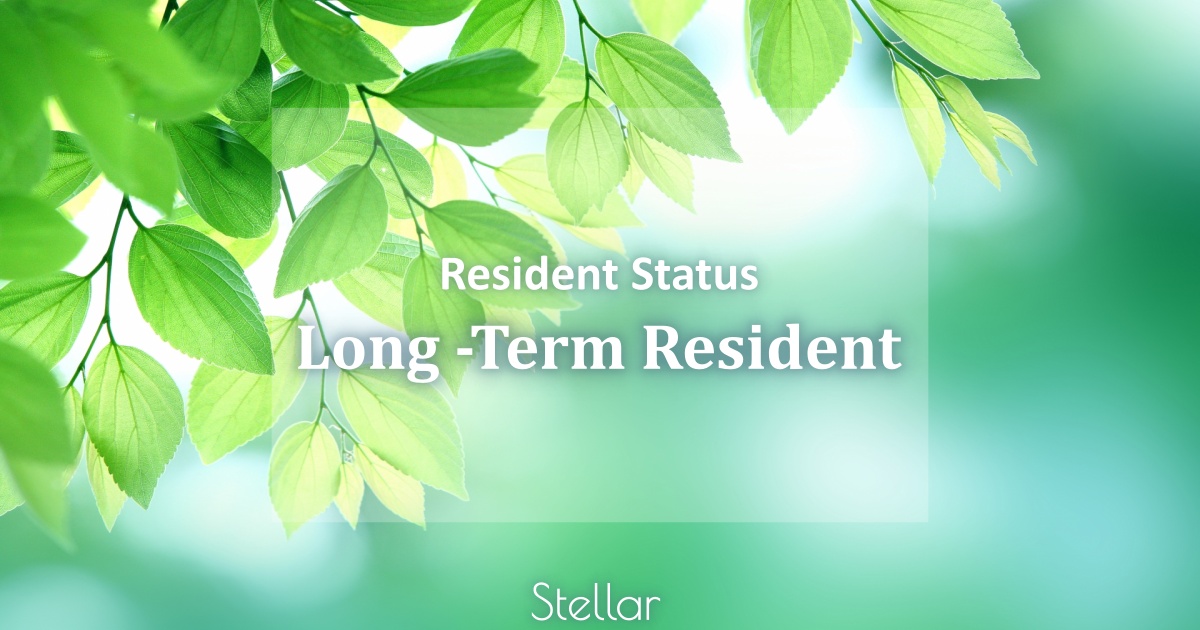Long-Term Resident” Visa in Japan: Key Information, Benefits, Types, and Examples

Introduction to the “Long-Term Resident” Status
The “Long-Term Resident” status is granted to individuals who do not fall under any other residence status but are recognized by the Minister of Justice as having special circumstances that justify a long-term stay in Japan.
This residence status can be issued for periods of 5 years, 3 years, 1 year, 6 months, or any other duration as specified by the Minister of Justice.
There are two types of “Long-Term Resident” statuses: one based on predetermined criteria set forth by the Ministry of Justice through government notification, and another granted at the discretion of the Minister of Justice, who takes individual circumstances and nature of activities.
According to the law, immigration inspectors can only grant landing permission for “Long-Term Resident” status upon landing in Japan to those who meet the conditions specified in the government notification.
Therefore, only individuals who fall under these criteria are eligible to obtain a Certificate of Eligibility.
Benefits of the “Long-Term Resident” Status
The “Long-Term Resident” residence status, unlike work-related residence statuses, imposes no restrictions on job types or employment conditions.
Holders of this status can work in any industry or occupation, and they can work either full-time or part-time, just like Japanese nationals.
Other residence statuses without employment restrictions include “Permanent Resident,” “Spouse or Child of a Japanese National,” and “Spouse or Child of a Permanent Resident.
Similarly, employing someone with “Long-Term Resident” status is highly attractive to companies, as there are no constraints regarding educational background, experience, or type of employment.
Additionally, it is easy to reassign or change job roles after hiring, making it a stable visa status that offers significant benefits for both the company and the individual’s career advancement.
Current Statistics on “Long-Term Resident” Holders
According to the Immigration Bureau’s press release on March 22, 2024, foreigners with “Long-Term Resident” status make up only 6.4% of the total number of foreign residents.
This represents a 4.8% increase compared to the previous year.
(as of the end of the Japanese fiscal year 2023)
Types of “Long-Term Resident” Status Defined by the Ministry of Justice
The types of ‘Long-Term Resident’ specified by the notice are roughly as follows
| No. 1 | Refugees resulting from temporary residence in specified countries. |
| No. 2 | Deleted |
| No. 3 | ・Third-generation Japanese descendants. ・Biological children (second generation) or grandchildren (third generation) of former Japanese nationals who have renounced their Japanese citizenship. ※(Must be of good conduct) |
| No. 4 | Biological grandchildren of individuals who previously held Japanese nationality. |
| No. 5 | ・Spouse of an individual who resides in Japan with ‘Spouse of a Japanese National’ status and who was born as a child of a Japanese national. ・Spouse of an individual who resides in Japan with more than 1 year period of “Long-Term Residents”. ※(Subject to certain conditions) |
| No. 6 | Minor biological children of Japanese nationals, permanent residents, special permanent residents, or long-term residents, etc. |
| No. 7 | Adopted children under six years old of Japanese nationals, permanent residents, special permanent residents, or Long-Term Residents. |
| No. 8 | Japanese war orphans left behind in China and their families |
Examples of Individual Considerations
Specific examples of ‘Long-Term Resident’ status granted based on individual circumstances and the nature of activities, as determined by the Minister of Justice, are not provided on the immigration website.
Generally, this status applies to foreigners already residing in Japan with another type of residence status.
Examples include:
- Refugees: Individuals recognized as refugees by the Minister of Justice outside of Notice No. 1.
- Divorce: Individuals who, after divorcing a Japanese national, permanent resident, or special permanent resident, wish to continue residing in Japan.
- Bereavement: Individuals who, after the death of a spouse who was a Japanese national, permanent resident, or special permanent resident, wish to continue residing in Japan.
- Support for Biological Children of Japanese Nationals: Individuals who care for and raise the biological child of a Japanese national.
- Change from ‘Family Stay’ Status: Individuals residing in Japan under the ‘Family Stay’ status who wish to work after graduating from elementary, junior high, or high school in Japan. ※
- Change from ‘Designated Activities’ Status: Individuals who, after graduating from high school in Japan and working under ‘Designated Activities’ (not pre-specified in government notifications), apply for a change of status to ‘Long-Term Resident.’ ※
※ For more details about these cases, please refer to this article.

Ensure a Smooth Long-Term Resident Application with Our Support
Preparing the documents for a “Long-Term Resident” application can be complex and require significant effort.
We offer support for the application process and will help ensure a smooth progression towards obtaining your residence status.
Feel free to contact us through our inquiry form.
Please Note
Please note that immigration regulations are subject to change, so always refer to the most up-to-date information.
